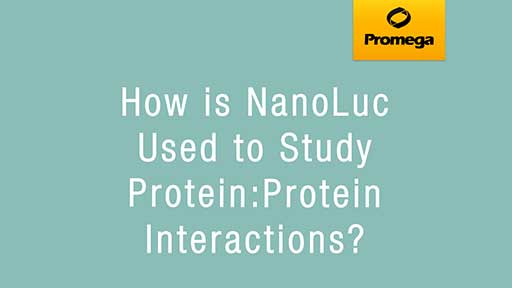Studying Protein Interactions with BRET and NanoLuc® Luciferase
Tim Rickey
Introduction
Protein:protein interactions play an important role in a broad range of cellular processes. Traditional methods for studying interactions between proteins, like co-immunoprecipitation, do not provide data in the context of the cellular environment. Using Bioluminescence Resonance Energy Transfer (BRET), it is possible to quantitatively measure the interaction between proteins in live cells. In some cases, it is even possible to measure these interactions in real time, observing not only the formation of the interaction but also the dissociation of the partners.
What is BRET?
BRET measures the interaction of proteins using a bioluminescent donor fused to a protein of interest and a fluorescent receptor fused to its binding partner. The bioluminescent donor, usually a luciferase, does not excite the fluorophore using light, but transfers resonance energy through dipole-dipole coupling. To transfer resonance energy, the donor must be within 10nm of the receptor and in the proper orientation, making the technique useful for measuring proteins in close proximity.

A Better Luciferase for BRET Assays
NanoLuc® Luciferase is small in size with a bright emission, which are both excellent qualities for a bioluminescent donor in BRET studies. NanoLuc® Luciferase has a mass of 19kDa, making it much smaller than Renilla (36kDa) or firefly (61kDa) luciferase. A smaller donor reduces the problem of steric effects when studying protein:protein interactions. NanoLuc® Luciferase is also approximately 150X brighter than other luciferases, allowing expression of the fusion protein at low levels while still providing enough energy for transfer. The strong signal also permits the use of a more red-shifted fluorophore than is possible using luciferases with a weaker signal. Using a red-shifted fluorophore reduces the overlap of the donor and receptor emission spectra, providing a better signal-to-noise ratio.

Putting It All Together — NanoBRET® Protein:Protein Interaction Assays
Selecting the proper combination of donor, acceptor and substrate is important to a successful BRET assay. The combination of NanoLuc® Luciferase, HaloTag® protein labeled with the NanoBRET® 618 fluorophore and a furimazine substrate creates an optimized NanoBRET® Assay with optimal spectral overlap, increased signal, and lower background compared to conventional BRET assays.

NanoBRET® PPI Starter Systems
Related Resources
Developing a NanoBRET® CRAF-BRAF Interaction Assay
Read this article to learn about the development of an assay to monitor the CRAF-BRAF protein:protein interaction.
Probing Myc and Max Interactions using NanoBRET
This article describes the use of the NanoBRET® assay to identify inhibitors of Myc-Max protein:protein interactions.